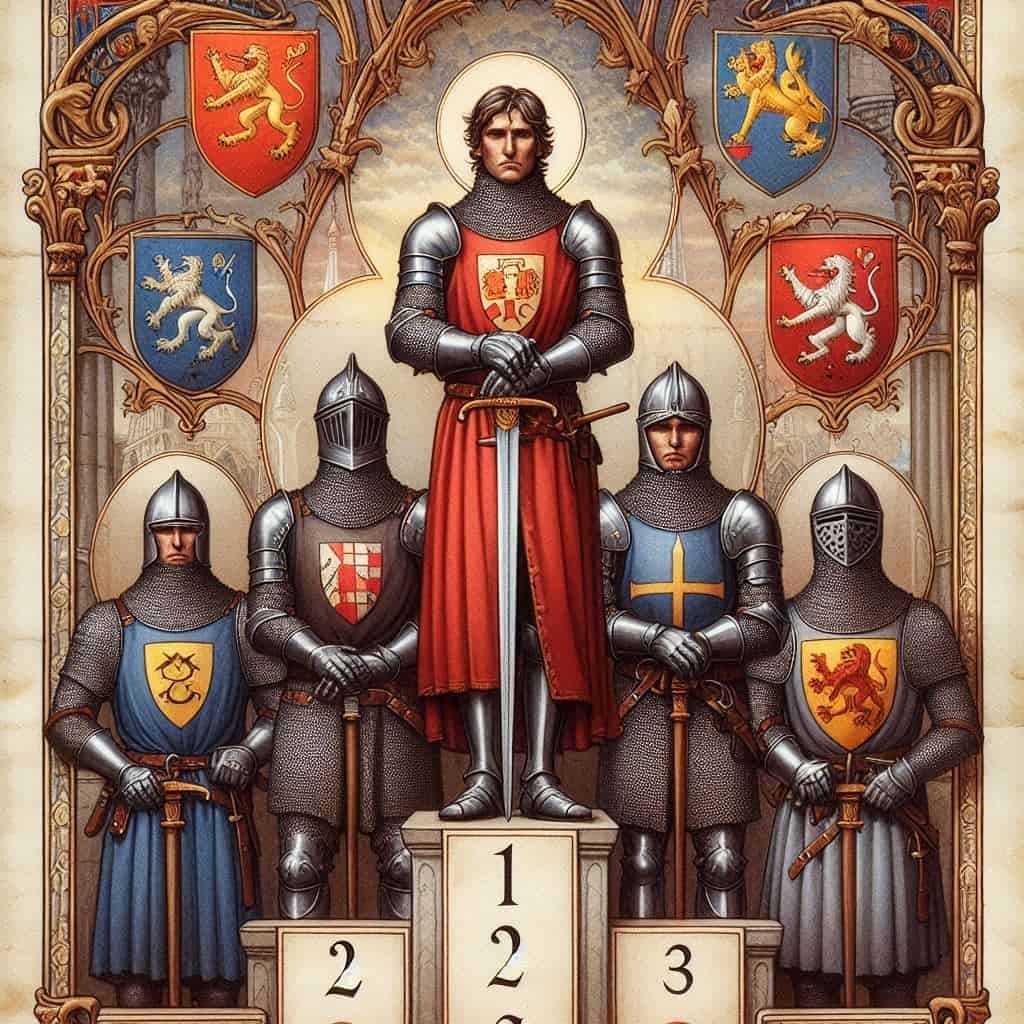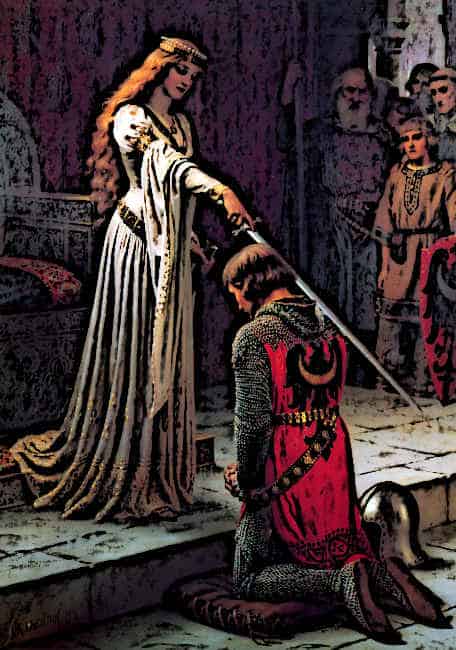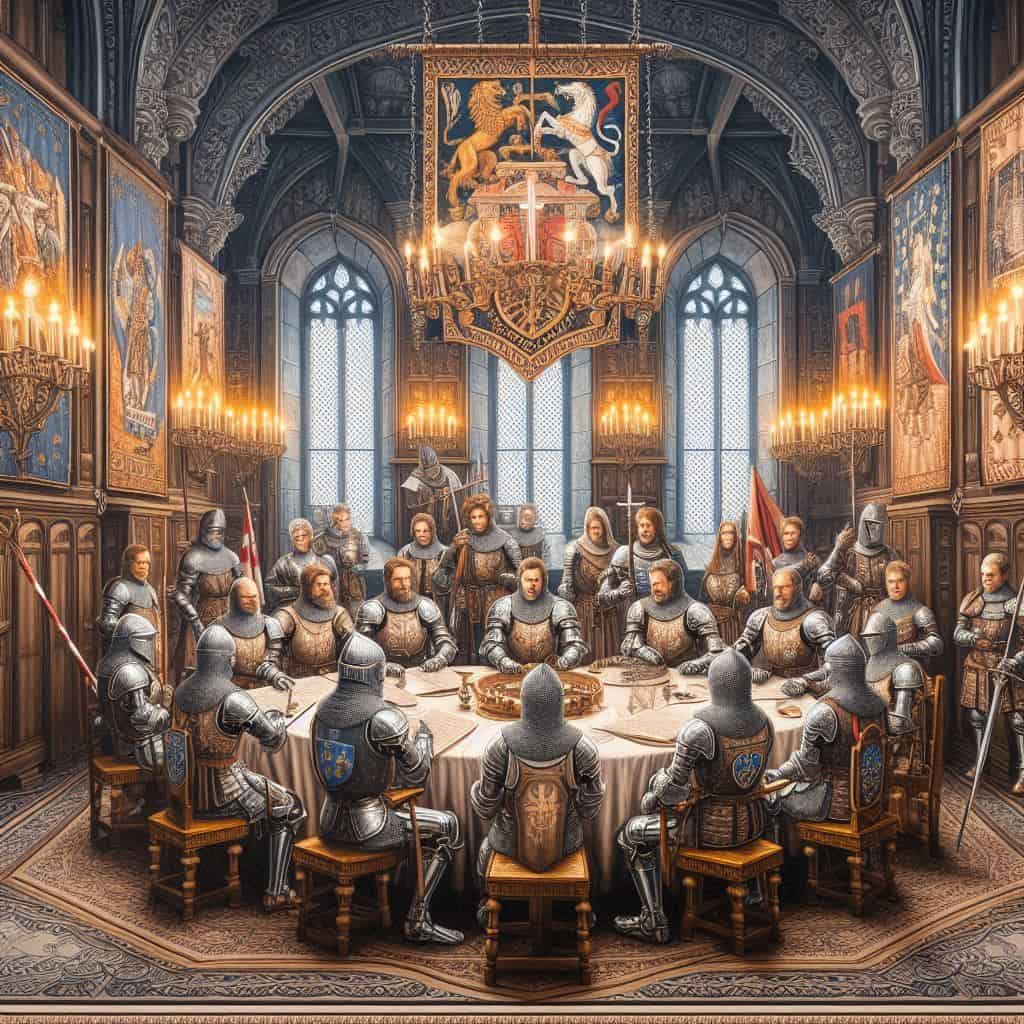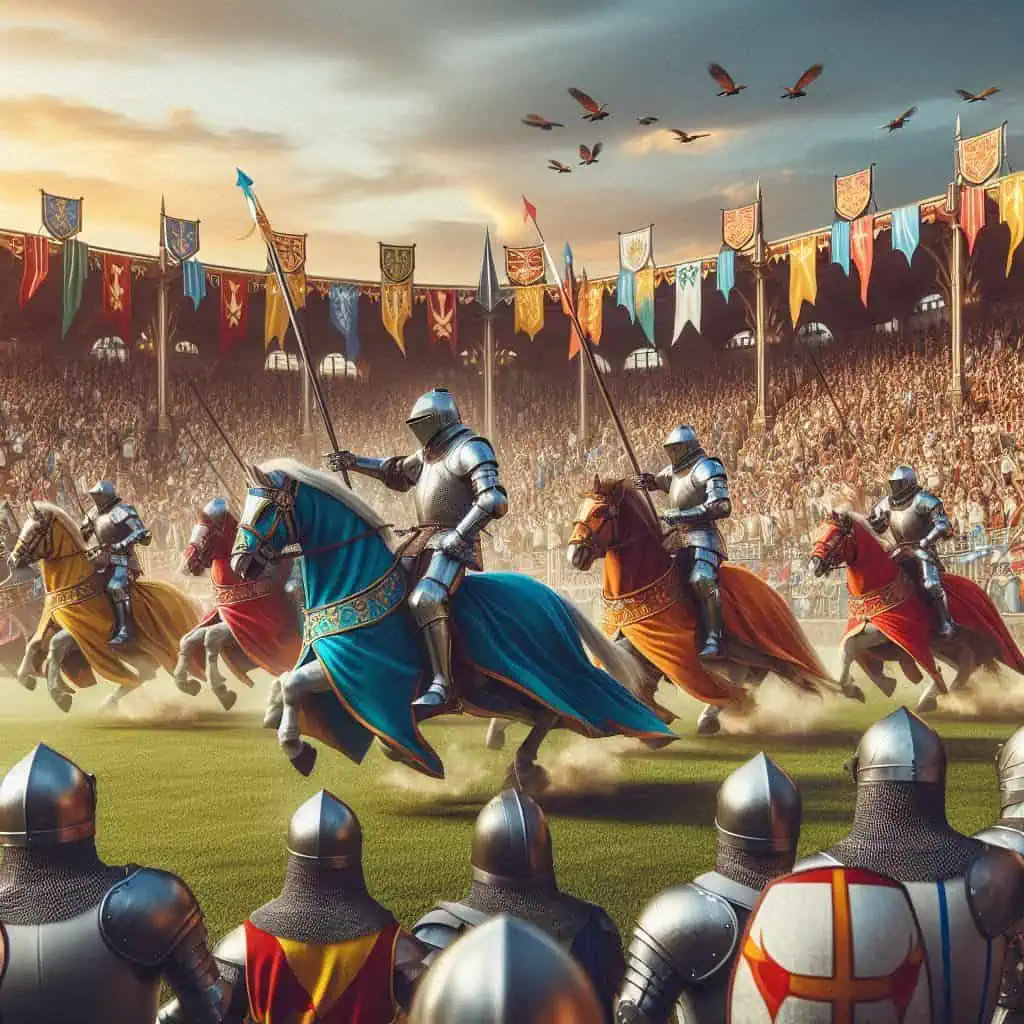Becoming a knight in medieval Europe was a long, arduous, and expensive journey, typically reserved for the sons of nobility. The path to knighthood demanded years of training, beginning in childhood as a page, then a squire, before finally being dubbed a knight—often in a formal ceremony. This progression required not only martial skill, but also access to wealth, land, and the right social connections, all of which were largely limited to the upper classes. While it was technically possible for a commoner to rise to knighthood, such cases were extremely rare, and usually only occurred due to acts of exceptional bravery on the battlefield or through the patronage of a powerful lord who was willing to elevate someone of lower status. Even then, such knights often remained social outsiders in noble circles.

Young noble boys often began their journey around the age of seven as pages in a noble household. There, they received a basic education in reading, writing, and courtly manners, and began physical training. Around age 14, they advanced to the rank of squire, serving directly under a knight and undergoing rigorous military training. If deemed worthy, a squire would be knighted in a formal dubbing ceremony, typically in his late teens or early twenties, where he received his sword and spurs and was addressed as “Sir.”

Life as a Page
Pages were young boys of noble birth sent to live in another noble household to begin their training. Their education was broad and designed to build both character and skills. They learned:
- Reading and writing (especially Latin)
- Heraldry – the study of coats of arms and noble lineage
- Music and dancing – courtly arts for noble life
- Courtly manners and chivalry – etiquette, respect, and the values of service
- Hunting, hawking, and horsemanship – essential skills for knights
- Games such as chess – to develop strategic thinking
Physically, pages practiced with wooden swords, learned basic combat techniques, and assisted with daily tasks such as dressing the lord, maintaining armor, and cleaning weapons. They were expected to observe and emulate the behavior of the older squires and knights.

Life as a Squire
A successful page became a squire, often around the age of 14. Some boys, like the famous knight William Marshal, began training as squires directly. Squires served a knight closely and received hands-on training in combat, strategy, and battlefield support.
Squires learned and practiced:
- Advanced horsemanship – including control in battle and tournaments
- Weapon handling – such as swords, lances, maces, poleaxes
- Close combat and grappling – strength, balance, and wrestling
- Use of the pell – a post for practicing strikes with swords
- Training on the quintain – a rotating target for mounted lance work
- Sparring – often with wooden or blunted weapons
- Participating in behourds – informal mock battles with other squires
Squires were also expected to accompany knights in real battles, assist in tournaments, care for their master’s weapons, armor, and horse, and prove their loyalty and discipline. If they performed well, they were dubbed knights in a formal ceremony involving an oath, the symbolic tap of a sword, and the bestowal of arms and armor.

Origins and Early Development
While armed cavalry existed in antiquity, the figure of the medieval knight became distinct during the High Middle Ages (11th–13th centuries). Early knights wore chainmail hauberks, conical helmets like the spangenhelm, and carried kite-shaped shields. These knights were often vassals of powerful lords, rewarded with land and titles for their military service.
The Norman Conquest of England in 1066, led by Duke William of Normandy, introduced the feudal system and solidified the knight’s role as both military elite and landholder. Norman knights used long swords, lances, and horseback tactics, making them superior to the Anglo-Saxon infantry.

Rise of Knighthood and Military Orders
As feudal society developed, knighthood evolved from a function into a hereditary title and social class. By the 12th century, the distinction between milites nobiles (noble knights) and milites gregarii (ordinary mounted soldiers) became more pronounced.
During the Crusades, knightly orders emerged, combining religious dedication with military duty. Key orders included:
- The Knights Templar
- The Knights Hospitaller
- The Teutonic Knights
- The Order of Saint Lazarus
These orders followed strict codes, took vows of chastity, poverty, and obedience, and played key roles in campaigns in the Holy Land and later in Europe.

The Code of Chivalry
The Code of Chivalry defined the moral and social responsibilities of knights. Though not universally practiced, chivalry was idealized in literature, romance epics, and religious texts. A famous early reference to chivalric values is found in The Song of Roland.
Typical vows included:
- Fear God and uphold the Church
- Serve your lord with loyalty and courage
- Protect the weak and defenseless
- Speak the truth and live with honor
- Respect women and maintain courtesy
Chivalry also extended to courtly love, a stylized form of devotion to noblewomen, often expressed through poetry and song.

Armor and Weapons
As threats evolved, so too did a knight’s armor and weapons. Early knights wore mail armor (hauberks), but by the 14th century, full suits of plate armor were developed. Armor became more protective but also more expensive and complex.
Key armor elements included:
- Helmets: Spangenhelm, Great Helm, Bascinet, Sallet
- Breastplates and backplates
- Gauntlets (hand protection)
- Sabatons (foot armor)
- Gambeson or arming doublet – padded clothing worn underneath
A full suit of armor typically weighed 33–55 lbs (15–25 kg). It was custom-fitted and allowed more mobility than often assumed, though it could be hot and restrictive in prolonged combat.
Weapons commonly used by knights included:
- Sword – the knight’s symbolic and practical weapon
- Lance – used in cavalry charges
- Poleaxe – for armored opponents
- Mace and warhammer – to crush armor
- Dagger (or rondel) – for close combat and finishing moves

Tournaments and Knightly Training
Tournaments were key to honing a knight’s skills and gaining prestige. They evolved from early mock battles like béhourds into organized events featuring:
- The Mêlée – a chaotic group battle simulating warfare
- The Joust – a formal mounted duel between two knights
Tournaments became major social events, with prizes, honor, and sometimes ransom at stake. Knights trained for these events using quintains, pells, and daily physical regimens. Success in tournaments enhanced a knight’s reputation, brought wealth, and attracted patrons or marriage alliances.

Decline of the Knight
By the late 15th century, changes in warfare signaled the decline of the traditional knight. Innovations such as:
- The longbow (e.g., at the Battle of Agincourt, 1415)
- The crossbow and arbalest
- Gunpowder weapons – hand cannons, arquebuses, and artillery
These weapons could pierce armor, making heavy cavalry less effective. In addition, the rise of professional standing armies and mercenaries reduced the need for feudal levies.
By the Renaissance, knighthood became largely ceremonial, preserved in honorific titles and chivalric orders.
Fun and Fascinating Facts
- A knight’s sword typically weighed 2–3 pounds
- Jousting knights could reach speeds up to 40 mph
- A knight’s destrier (warhorse) was trained to trample and kick enemies
- Fighting on piggyback was used to teach young pages balance and mounted combat
- The title “Sir” was bestowed upon a knight during the dubbing ceremony
- Knights wore padded garments like gambesons to protect from blunt force
- Knights preferred ransom over killing captured noble opponents for profit and diplomacy
The medieval knight remains one of history’s most iconic figures, blending martial skill, noble ideals, and romantic legend. Though their time has passed, their legacy endures in literature, films, and cultural memory as enduring symbols of honor, courage, and chivalry.
Learn more about Becoming a Knight
Learn More about Norman Knights
Learn more about Crusader Knights
Learn more about Knights & the Code of Chivalry
Learn more about Knights Armour *Helmets
Learn More about Medieval Knights Weapons
Learn more about Knights & Tournaments
1. What were medieval knights?
Medieval knights were heavily armored warriors from the Middle Ages who served their lords in military and political roles. They followed a code of chivalry and were usually of noble birth.
2. What was the role of a knight in medieval times?
Knights served as mounted soldiers, protected their lord’s land, fought in wars, and upheld justice. They also participated in tournaments and performed ceremonial duties.
3. How did someone become a knight in the Middle Ages?
Boys usually started training as a page around age 7, became squires in their teens, and could be knighted in a formal ceremony after proving themselves in combat and service.
4. What was the Code of Chivalry?
The Code of Chivalry was a set of rules that guided knightly behavior. It emphasized bravery, loyalty, honor, courtesy, and the protection of the weak and the innocent.
5. What kind of armor did medieval knights wear?
Early knights wore chainmail, while later ones used full plate armor. Their equipment included helmets, gauntlets, shields, and swords, often displaying their family crest or coat of arms.
6. Did all knights fight in wars?
Not all knights were active soldiers. Some managed estates, served as advisors, or carried out diplomatic and administrative duties for their lords or kings.
7. When did medieval knights stop being relevant?
Knights began losing their military role in the 15th century due to the rise of professional armies and gunpowder weapons, but they remained influential as symbols of nobility and honor.
